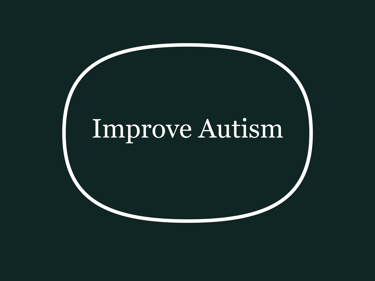Vitamin A and Autism Research
Association Between Peripheral Blood Levels of Vitamin A and Autism Spectrum Disorder in Children: A Meta-Analysis
Authors:
Wang, N., Zhao, Y. and Gao, J.
Research study
Year
Type
Study size
Abstract
LINK/DOI
Vitamin A is an essential fat-soluble micronutrient that plays important roles in a surprisingly wide variety of biological processes from early growth and development to brain maintenance. Numerous clinical studies have been conducted to explore the relationship between peripheral vitamin A levels and autism spectrum disorder (ASD), but the results of these studies are controversial. Therefore, we assessed the association between peripheral vitamin A levels and ASD in the present meta-analysis. Relevant records were retrieved through the Embase, Web of Knowledge and PubMed databases up to 13 November 2020. Reference lists were also searched and analyzed. Hedges' g with its corresponding 95% confidence interval (CI) was used to assess the association between peripheral vitamin A levels and ASD. A fixed or random effects model was selected according to a heterogeneity test in overall and subgroup analyses. Five records (six studies) with 935 ASD children and 516 healthy children were included in the present study. Significantly decreased peripheral vitamin A concentrations were observed in ASD children compared with healthy children (Hedges' g = -0.600, 95% CI -1.153 to -0.048, P = 0.033). A similar result was also obtained after removing the studies identified by Galbraith plots. In addition, no obvious publication bias was found in the meta-analysis. The findings of our meta-analysis suggested decreased peripheral vitamin A levels in ASD children compared with healthy children. Further investigations into the effects of vitamin A on the development of ASD are warranted.
935
Meta-analysis
2021
doi: 10.3389/fpsyt.2021.742937


Effect of vitamin A supplementation on gut microbiota in children with autism spectrum disorders - a pilot study
Authors:
Liu, J., Liu, X., Xiong, X.Q., Yang, T., Cui, T., Hou, N.L., Lai, X., Liu, S., Guo, M., Liang, X.H. and Cheng, Q.
Research study
Year
Type
Study size
Abstract
LINK/DOI
Background:
Dysbiosis of gut microbiota are commonly reported in autism spectrum disorder (ASD) and may contribute to behavioral impairment. Vitamin A (VA) plays a role in regulation of gut microbiota. This study was performed to investigate the role of VA in the changes of gut microbiota and changes of autism functions in children with ASD.
Results:
Sixty four, aged 1 to 8 years old children with ASD completed a 6-month follow-up study with VA intervention. High-performance liquid chromatography was used to assess plasma retinol levels. The Autism Behaviour Checklist (ABC), Childhood Autism Rating Scale (CARS) and Social Responsiveness Scale (SRS) were used to assess autism symptoms. CD38 and acid-related orphan receptor alpha (RORA) mRNA levels were used to assess autism-related biochemical indicators’ changes. Evaluations of plasma retinol, ABC, CARS, SRS, CD38 and RORA mRNA levels were performed before and after 6 months of intervention in the 64 children. Illumina MiSeq for 16S rRNA genes was used to compare the differences in gut microbiota before and after 6 months of treatment in the subset 20 of the 64 children. After 6 months of intervention, plasma retinol, CD38 and RORA mRNA levels significantly increased (all P < 0.05); the scores of ABC, CARS and SRS scales showed no significant differences (all P > 0.05) in the 64 children. Meanwhile, the proportion of Bacteroidetes/Bacteroidales significantly increased and the proportion of Bifidobacterium significantly decreased in the subgroup of 20 (all false discovery rate (FDR) q < 0.05).
Conclusions:
Bacteroidetes/Bacteroidales were the key taxa related to VA. Moreover, VA played a role in the changes in autism biomarkers. It remains unclear whether the VA concentration is associated with autism symptoms.
64
Pilot intervention study
2017
doi: 10.1186/s12866-017-1096-1
Vitamin A improves the symptoms of autism spectrum disorders and decreases 5-hydroxytryptamine (5-HT): A pilot study
Authors:
Guo, M., Zhu, J., Yang, T., Lai, X., Liu, X., Liu, J., Chen, J. and Li, T.
Research study
Year
Type
Study size
Abstract
LINK/DOI
Autism spectrum disorders (ASD) are complicated neurodevelopmental disorders. Many studies have demonstrated that children with autism have multiple nutritional deficiencies and increased serum 5-hydroxytryptamine (5-HT) levels. In our previous study, 77.9% of autistic children were found to have vitamin A deficiency, and the concentration of vitamin A was negatively associated with the CARS score. In the present study, we sought to test whether vitamin A supplementation could improve autistic symptoms and decrease serum 5-HT levels. The DSM-V criteria and CARS score were used for symptom description and symptom assessment of the patients, respectively, before and after vitamin A supplementation (VAS). Serum retinol and 5-HT levels, mRNA levels of RAR α, β, and γ and TpH 1 expression were detected in autistic children before and after VAS and in normal children. Serum retinol levels in children with ASD were significantly lower than in control children. Serum 5-HT levels in children with ASD were higher than in control children, which were correlated with symptom severity of children with autism. After VA supplementation, the children with ASD exhibited significant improvement in autism symptoms. Serum retinol concentrations of children with ASD were significantly increased, and serum 5-HT levels were decreased. Moreover, statistically significant changes were observed in mRNA expression levels of RAR α, RAR γ and TpH 1 after VAS compared to baseline. This study suggested that VA supplementation may improve symptoms and reduce 5-HT levels in children with ASD, indicating that VA supplementation is a reasonable therapy at least for a subset of children with autism.
33
Pilot intervention study
2018
doi: 10.1016/j.brainresbull.2017.11.001
Vitamin A and vitamin D deficiencies exacerbate symptoms in children with autism spectrum disorders
Authors:
Guo, M., Zhu, J., Yang, T., Lai, X., Lei, Y., Chen, J. and Li, T.
Research study
Year
Type
Study size
Abstract
LINK/DOI
Objectives:
This study was designed to investigate the vitamin A (VA) and vitamin D (VD) levels in children with autism spectrum disorders (ASD) and to determine whether co-deficiency of VA and VD exacerbates clinical symptoms in autistic children.
Methods:
The Autism Behavior Checklist, Childhood Autism Rating Scale (CARS), and Social Responsiveness Scale (SRS) were used to assess the symptoms of 332 children diagnosed as ASD. And the Gesell Developmental Scale (GDS) was used to evaluate neurodevelopment in children with ASD. Anthropometric measurement and questionnaire results were compared for all autistic children and 197 age- and gender-matched control children. Serum retinol levels were detected with high-performance liquid chromatography, and serum levels of 25-OH vitamin D were measured with an immunoassay method in the two groups.
Results:
The ZHA, ZWA, and ZBMIA of the children with ASD were significantly lower than those of the control children. Furthermore, higher proportions of children with picky eating, resistance to new foods, and eating problems were observed in the ASD group when compared with the control group. Serum retinol and 25-OH vitamin D levels in autistic children were significantly lower than those in the control children. Additionally, VA and VD co-deficiency impacts more on the symptoms and development in autistic children.
Conclusions:
We found that children with autism have more VA and VD deficiencies than control children, and VA and VD co-deficiency may exacerbate the symptoms of children with ASD.
332
Cross-sectional observational study
2019
doi: 10.1080/1028415X.2017.1423268
A weekly vitamin A supplementary program alleviates social impairment in Chinese children with autism spectrum disorders and vitamin A deficiency
Authors:
Lai, X., Zhang, Q., Zhu, J., Yang, T., Guo, M., Li, Q., Liu, H., Wu, Q.H., Chen, J. and Li, T.Y.,
Research study
Year
Type
Study size
Abstract
LINK/DOI
Background:
Children in China with Autism Spectrum Disorders (ASD) are prone to vitamin A deficiency (VAD). The present study compared two vitamin A supplements (VAS) in two groups of children with ASD and VAD to explore a better VAS program for children with ASD.
Method:
A total of 138 3–8-year-old children with ASD (118 males and 20 females) were enrolled in this 6-month study. Of these 138 children, 82 who had VAD (ASD-VAD) were divided into two VAS groups that received the recommended VAS program (RNI-VAS) or a weekly dose of VAS (WD-VAS). The 56 children who had normal vitamin A levels (ASD-VAN) served as a control group. The Social Responsiveness Scale (SRS) was used to assess the severity of social impairment before and after the interventions. Their serum retinol (VA) and oxytocin (OXT) concentrations, the mRNA expression of retinoic acid receptors (RARs), and CD38 gene in peripheral blood was measured before and after the 6-month intervention.
Results:
The WD-VAS program increased VA levels better than the RNI-VAS program did (P < 0.01), and it significantly decreased SRS scores (P < 0.05). In addition, the change in VA was positively correlated with the change in mRNA levels in RARβ (r = 0.2441, P = 0.0092), the CD38 in PBMC (r = 0.2729, P = 0.0033), and the change in OXT concentration in serum (r = 0.3735, P < 0.0001). VA was also negatively correlated with changes in SRS scores across the three groups (r = −0.2615, P = 0.0026).
Conclusion:
The WD-VAS might be more suitable for children with ASD and VAD than other interventions to improve both VA and social functioning, which may be mediated through the RARβ-CD38-OXT axis
138
Controlled interventional study
2021
doi: 10.1038/s41430-020-00827-9


